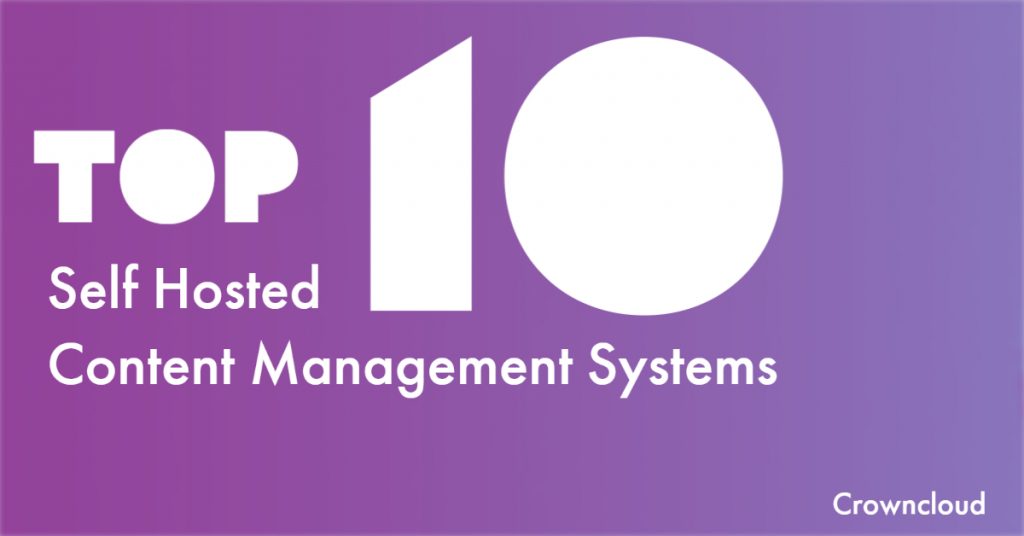
Content Management Systems :
A content management system, or CMS, is software that allows people to generate, manage, and edit website content without requiring specialist technical skills. It’s a technology that allows you to create a website without having to write all of the code from scratch (or even know how to code at all).
Rather than designing your own system for making web pages, storing photos, and other activities, the content management system takes care of it all for you, allowing you to concentrate on the more forward-facing aspects of your website. You can discover content management systems for various purposes, such as document management, in addition to websites.
We have sorted out some of the best CMS available. Have a look.
1. WordPress
WordPress is a commonly used PHP-based CMS (Content Management System). For small businesses, personal blogs & websites, WordPress can be a good fit. Below are some of the installation guides we have baked for you, have a look.
AlmaLinux 8 , CentOS Stream 9 (LAMP) , CentOS Stream 9 (LEMP) , CentOS 7 , Debian 11 , Debian 10 , Debian 9 , Rocky Linux 8 , Ubuntu 18.04 , Ubuntu 20.04 , Ubuntu 21.04
2. Drupal
Drupal is a commonly used PHP-based CMS (Content Management System). For small businesses, personal blogs & websites, Drupal can be a good fit. Below are some of the installation guides we have baked for you, have a look.
AlmaLinux 8 , CentOS Stream 9 (LAMP) , CentOS Stream 9 (LEMP) , Debian 10 , Rocky Linux 8 , Ubuntu 20.04 , Ubuntu 21.04
3. Joomla
Joomla is a free and open-source content management system for publishing web content on websites. Web content applications include discussion forums, photo galleries, e-Commerce, and user communities, and numerous other web-based applications. Below are some of the installation guides we have baked for you, have a look.
4. Ghost
Ghost is a free and open source blogging platform written in JavaScript and distributed under the MIT License, designed to simplify the process of online publishing for individual bloggers as well as online publications. Below are some of the installation guides we have baked for you, have a look.
AlmaLinux 8 , Debian 10 , Rocky Linux 8 , Ubuntu 20.04 , Ubuntu 21.04
5. Magento
Magento is an e-commerce platform built on open source technology that provides online merchants with a flexible shopping cart system, as well as control over the look, content, and functionality of their online store. Magento offers powerful marketing, search engine optimization, and catalog-management tools. Below are some of the installation guides we have baked for you, have a look. .
6. Prestashop
PrestaShop is a commonly used PHP-based CMS (Content Management System). For small & large businesses PrestaShop can be a good fit. Below are some of the installation guides we have baked for you, have a look.
7. Winter CMS
Winter is a free, open-source content management system based on the Laravel PHP framework. Developers and agencies all around the world rely upon Winter for its quick prototyping and development, safe and secure codebase, and dedication to simplicity. Below are some of the installation guides we have baked for you, have a look.
8. Microweber CMS
Microweber is a Drag and Drop website builder and a powerful next-generation CMS. It’s based on the PHP Laravel Framework. You can use Microweber to make any kind of website, online store, and blog. The Drag and Drop technology allows you to build your website without any technical knowledge. Microweber CMS simplifies this task as much, as possible. Below are some of the installation guides we have baked for you, have a look.
9. Concrete CMS
Concrete CMS is an open-source content management system for publishing content on the World Wide Web and intranets. Concrete CMS is designed for ease of use, for users with a minimum of technical skills. It enables users to edit site content directly from the page. Below are some of the installation guides we have baked for you, have a look.
10. Backdrop CMS
Backdrop CMS is a full-featured content management system that allows non-technical users to manage a wide variety of content. It can be used to create all kinds of websites including blogs, image galleries, social networks, intranets, and more. Below are some of the installation guides we have baked for you, have a look.
Thanks for reading. For more updates, take a look at our Knowledgebase.